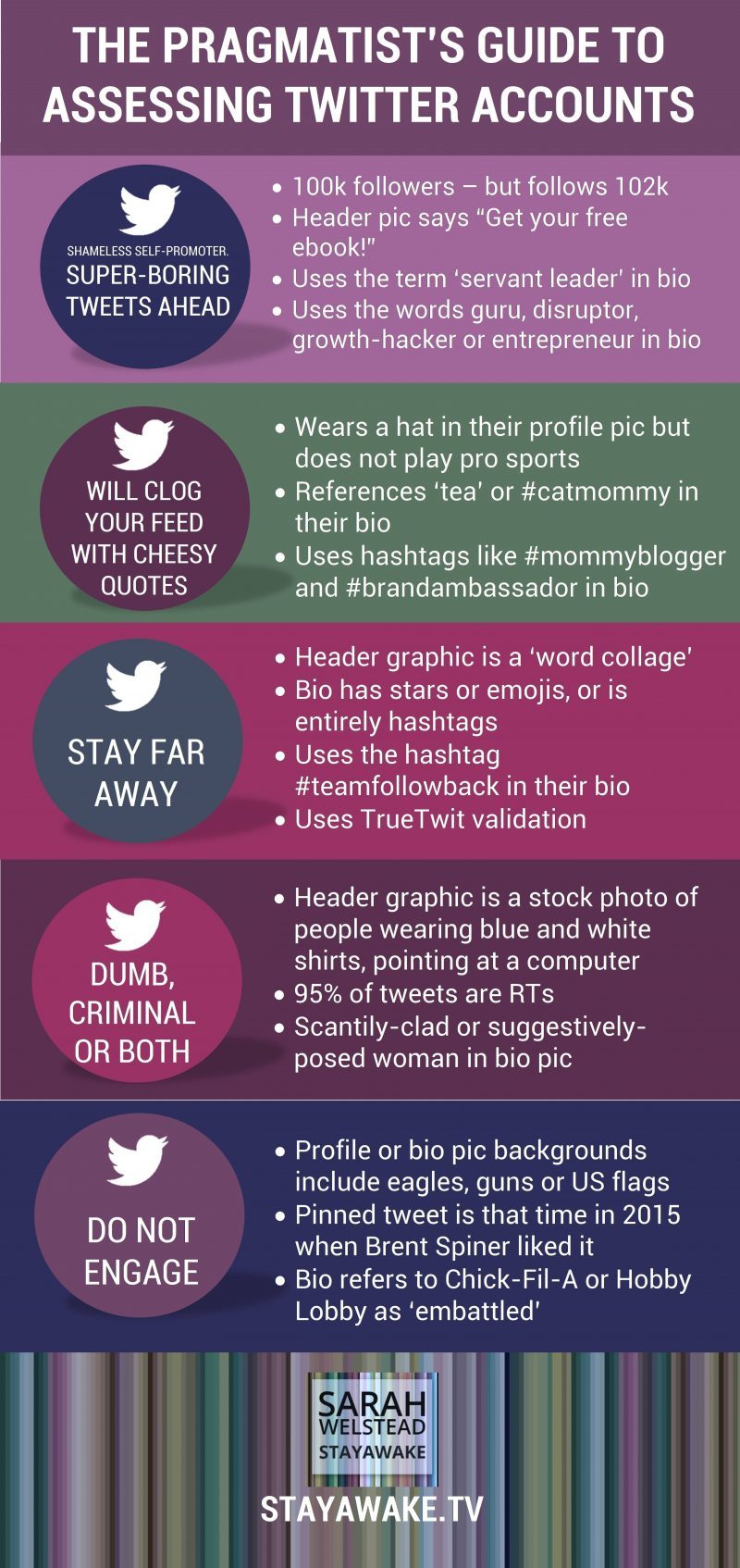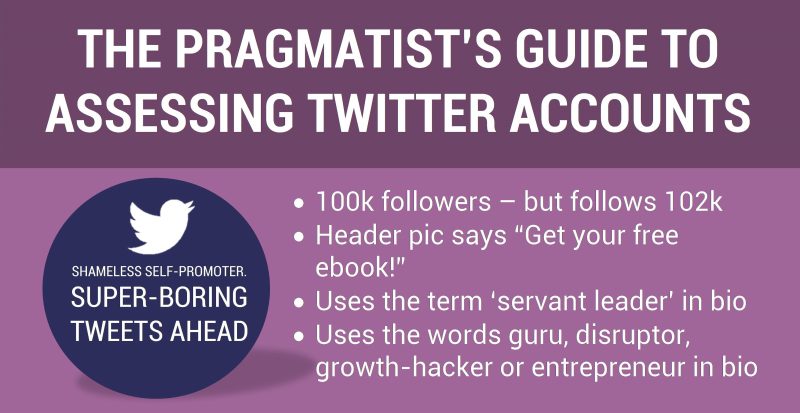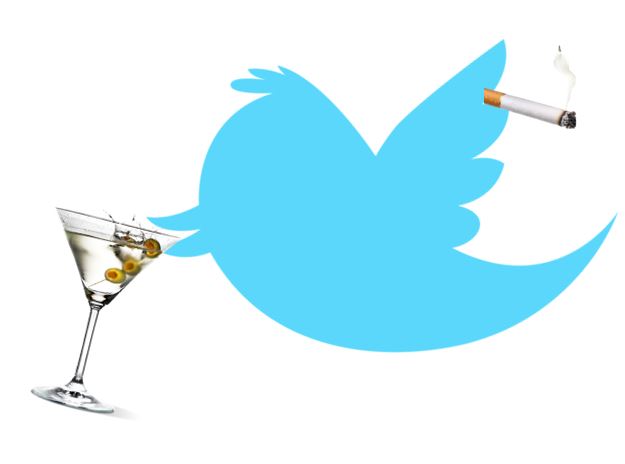Things the ‘social media gurus’ won’t tell you
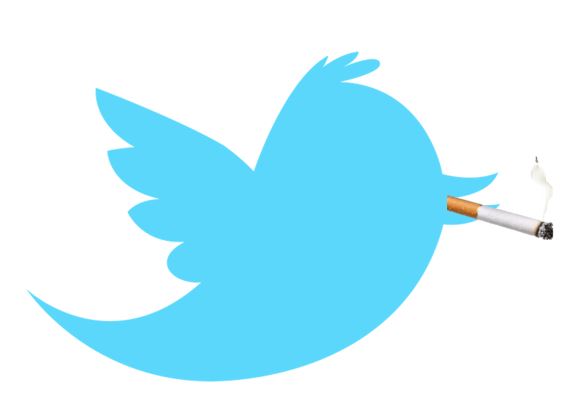
The other day I wrote about why almost all small- and mid-sized businesses should have a Twitter presence.
But let’s face it: The world didn’t need another blog post about why Twitter’s so great for SMBs. Every day, my own Twitter feed is clogged unto bursting with articles by supposed marketing geniuses (if they call themselves ‘guru’, it must be true!) promising that if you’ll only follow their 23 Foolproof Steps, you too will achieve business success via Twitter.
What I’ve noticed, however, is that all these “Top 10 tips for succeeding on Twitter” pieces littering the web seem to be written by people who’ve spent about 2 hours on Twitter, put quantity over quality, and who are too busy driving traffic to their keywords that they don’t actually tell you anything useful, like “If someone whose profile pic is a possibly-underage girl in a bikini follows you, do not follow back.”
Avoid disaster by following these simple rules
1. Don’t go more than a week without logging into your account or tweeting. Dormant accounts, especially if they have 1000+ followers, are targets for hackers/spoofers who take over the account and start tweeting spam. You don’t want to discover that your long-ignored account has been tweeting porn for 3 months without you noticing (true story).
2. Do not follow anyone with a US flag as their profile pic backdrop. 95% of the time, this person will turn out to be a super-right-wing conservative who will, sooner or later, tweet something unbelievably offensive, which will lead to two problems: Either (a) you will want to tweet a response, which will end badly; or (b) you will get associated with a whole community of offensive types that are not good for your brand. Prevention is the only cure.
3. Almost anyone who tweets more than 5 times a day is going to be boring – or worse. Yes, you should tweet every day. But almost any non-celebrity/non-genius who tweets every 5 minutes is just going to clog up your feed with Inspirational Quotes or a zillion links to their Free Ebook – Download Now! page. Follow back if you want to keep your numbers up – but then see #4.
4. Use the ‘mute’ option liberally. Putting someone on mute means you don’t have to unfollow them (if you think that would cause offense and/or a mutual unfollow, thereby reducing your numbers), while still avoiding their incessant Maya Angelou quotes. Here’s where you can find the mute function:
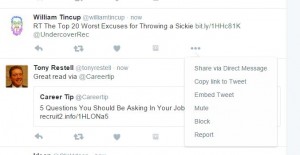
5. To grow your base, you have to follow 25-50 new people a day. Here is what hardly anyone will ever tell you: Unless you’re famous, or really super-hilarious, no one is going to seek you out on Twitter. I’m sorry, but they just aren’t. So you have to follow a whole bunch of people and then hope that some of them follow you back.
6. A half-naked profile pic is not someone you want to follow. There is a lot of crap on Twitter – the sheer number of accounts focused on pantyhose fetishists alone is astounding. To avoid falling into the Twitter slough of despond, do not follow, or follow back, anyone whose profile pic shows more skin than you’d see at the office on a normal day.
6.(a) Don’t follow anyone doing an elaborate duck-face, either. For mostly the same reasons.
7. Beware of secret religionists. #6 notwithstanding, there are a startling amount of religious types on Twitter, and my personal philosophy is that religion and business do not mix. People who include ‘Christ-follower’ in their profiles are easy to spot – it’s the ones using secret code you have to be careful of. Religious tip-offs include using the word ‘servant’ in a list of personal adjectives (“husband, father, servant, SEO master”); Bible verses (any numbers separated by a colon, like 3:11); use of the words ‘saved’, ‘believer’, ‘disciple’ and ‘Israel’ are also problematic. And I’m always a bit dubious about anyone whose bio includes ‘family first’.
8. More hashtags = more spam. A person whose bio and/or tweets #consist #of #almost #nothing #but #hashtags is not interested in anything but promoting their own, probably spammy, website. Don’t follow them; don’t follow them back – they will do nothing for you, your brand or your business.
9. Don’t retweet a link you haven’t checked. Twitter-scammers are smart: They can make a headline sound great, so you retweet not realizing the link actually goes to some ad-filled clickbait or malware site. At best, you look lazy; at worst, you lose followers who think you too are a scammer. Check every link you tweet.
So there you are: 9 handy tips that should keep you out of the morass of mediocrity that Twitter can seem to be if you aren’t careful. Social media is not for the faint of heart.
